After two years of drought, the grasses, shrubs and trees are tinder dry in El Paso County and across the state, cranking up the April fire risk to what the state would normally see in summer.
"This is looking more like the middle of June as far as the fuels and the fire danger indices are tracking right now," said Coleen Haskell, wildland fire meteorologist for the Rocky Mountain Area Coordination Center.
The scientific measure of how hot fuels can burn, known as the energy release component, is in the 97th percentile in the Colorado Springs area, way above the maximum record, she said.
Combine that with wind and the severe fire danger is as high as it gets for eastern Colorado and eastern New Mexico, she said. On Friday, Colorado set a record for the highest fire danger in a decade, said Mike Morgan, director of the Colorado Division of Fire Prevention and Control.
Amid those intense conditions, a welding accident on Friday started a fire near InterQuest Parkway and Interstate 25 that swept through a drainage area, burning 17 acres and triggering the evacuation of 500 homes. No structures were lost or homes damaged, but it was one of many instances of fires triggering evacuations in recent days.
In the past week, evacuations have been called in Longmont, Lyons, Gypsum, Boulder, Trinidad and Eagle County, said U.S. Rep Joe Neguse, D-Lafayette. In the town of Monte Vista wildland fire consumed 17 structures and six families were displaced last week.
"This is the highest risk April we have ever had," Gov. Jared Polis said Friday. It is possible conditions could heat up into the worst fire season in the state's history, Senate President Steve Fenberg said.
To be prepared, state officials announced nearly $20 million in additional funding Friday to add air support, improve dispatch services, and introduce new satellite technology that will allow firefighters to see where all the firetrucks and aircraft are around a fire.
The additional state contracts will add two Type 1 helicopters, the largest and fastest, a large air tanker and extend the contract of another air tanker, Polis said. The dedicated aircraft are important because Colorado competes with 19 other states for federal firefighting air support.
Wildfires are off to an accelerated start across the country, burning 20% more acres compared to the 10-year average, according to the National Interagency Fire Center. Many of those fires have burned across the southeast and the plains, Haskell said.
Colorado is seeing extreme conditions even though it received average snowpack. Drought last summer and fall left the soils so dry an average snowpack could not provide enough moisture to catch up, Haskell said. The snow also came late, compounding the problem, she said.
"It was the shortest snow year we have seen in history," she said, speaking to conditions across her five-state region, which includes Colorado.
In Colorado Springs, only .01 inch of moisture has fallen in April, well below the 1.45 inches that the city would see on average for the month, according to the National Weather Service.
It is not unusual to see grass fires during April in Colorado, the windiest time of year, but it has been exacerbated by the drought conditions, said Becky Bolinger, the assistant state climatologist.
Fire risk probably will decrease in May as the vegetation greens up. However, new grass will dry out in June, contributing to the fire danger during what is traditionally the most active fire month in Colorado, Haskell said.
If spring runoff happens faster than normal, it can also contribute to higher fire risk earlier in the season. But, for the most part, runoff in Colorado has not been accelerated by high temperatures as of yet, Bolinger said.
A monsoon in July and August could temper the extreme fire danger, but they have been inconsistent in recent years. The failure of the monsoon to reach the state contributed to the record-setting East Troublesome and Cameron Peak fires in 2020, she said. Plus when soil is dry, it pumps dry heat into the air that cannot produce thunderstorms.
"Our hit-and-miss thunderstorms could be more miss than hit," she said.
In Colorado Springs, the vegetation has been slightly more moist in the northern parts of town than the southern, Fire Marshal Brett Lacey said. But he expects all the fire fuels will keep drying out.
The city expects to soon start fire-mitigation projects, funded by a $20 million November ballot measure, to help combat that risk. Lacey expects a committee to review the first projects in May.
The department has hired nine seasonal employees who will work on chipping vegetation from mitigation projects. Contractors will do many of the other larger projects.
Residents can reduce fire risk on their own properties by clearing dead vegetation, mowing tall dead grass and starting to irrigate.
He urged everyone to also register for Peak Alerts to get fire evacuation notices.
Fire officials are hosting a series of informational town halls about fire awareness and preparedness for individual Colorado Springs neighborhoods. A listing of events can be found at coswildfireready.org.



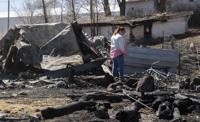

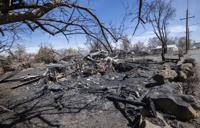

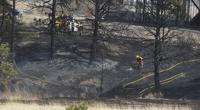

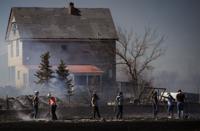

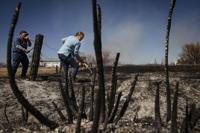




 Your Privacy Choices
Your Privacy Choices